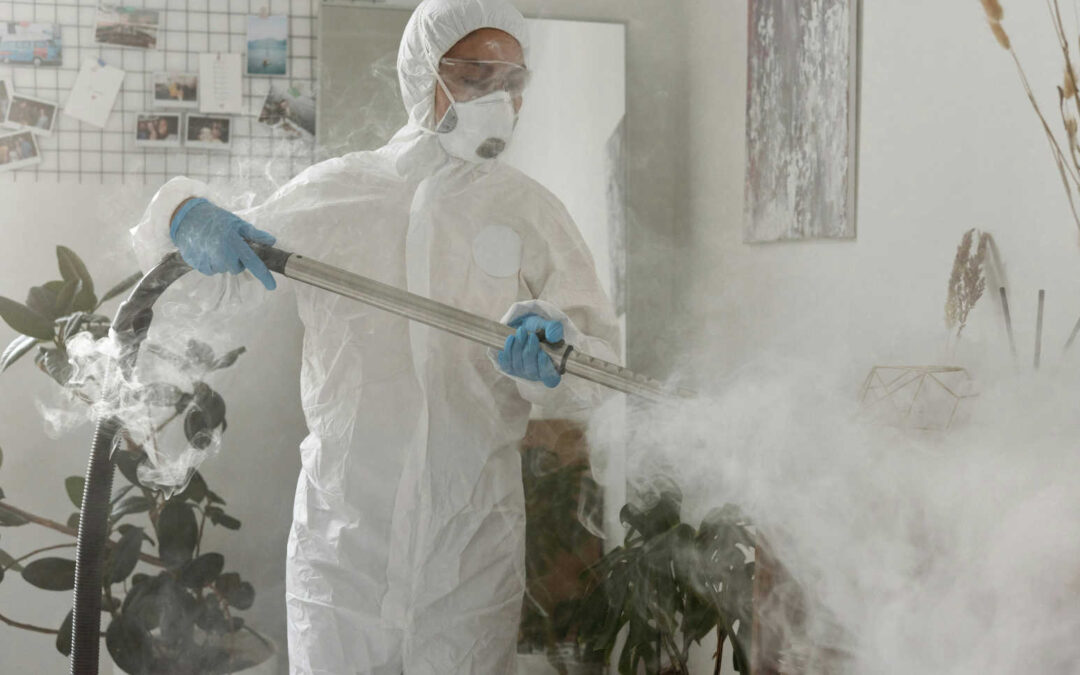Why Standard Cleaning Isn’t Enough
Daily mopping and wiping can make a restroom look clean on the surface, but appearances are often misleading. Standard methods leave behind residues that slowly build up in tile pores and grout lines. Over time, these embedded soils not only dull the appearance of surfaces but also trap moisture and bacteria.
Even with strong cleaning chemicals, odors can persist because traditional tools push dirt around rather than fully removing it. For facility managers and operators, this means that no matter how often restrooms are mopped, they may still smell unclean and look aged. This is where a deeper, more effective approach is needed.
What is Washroom Steam Cleaning?
Washroom steam cleaning uses high-heat, low-moisture vapor to sanitize surfaces without flooding them with water or chemicals. The process involves machines that generate dry vapor steam—superheated to break down grime, kill bacteria, and loosen soils from tight crevices.
Unlike mopping, which only addresses surface dirt, steam penetrates deep into grout, corners, and textured surfaces. The result is a restroom that doesn’t just appear clean but is truly sanitized at a microscopic level.
Benefits of Steam vs. Traditional Methods
Steam cleaning stands apart from traditional mopping and scrubbing for several reasons. Some of the most important advantages include:
- Grout restoration: Steam penetrates porous grout, lifting stains and embedded soils that chemicals cannot.
- Faster drying times: Because steam uses minimal water, restrooms are ready to reopen quickly.
- Reduced chemical use: High heat sanitizes surfaces naturally, cutting down on harsh cleaners and artificial fragrances.
For commercial washrooms, these benefits mean fresher spaces, safer air quality, and longer-lasting results.
Key Areas Steam Targets
Restrooms have many problem areas that standard cleaning overlooks. Steam cleaning focuses on these hotspots, breaking down buildup where it matters most:
- Grout lines that absorb soils and darken over time.
- Urinal bases where odors often originate.
- Drain covers that collect biofilm and bacteria.
- Hinge points on stalls and fixtures that trap grime in hard-to-reach areas.
By treating these specific areas, steam cleaning transforms not just the look of the washroom but also its hygiene.
Odor Control and Air Quality
One of the biggest challenges in restroom maintenance is odor control. Mopping often masks smells with strong chemicals, but odors quickly return. Steam cleaning addresses the root cause: bacteria and biofilm buildup.
By eliminating these odor sources, washrooms no longer rely on artificial scents. This improves indoor air quality (IAQ), creating a fresher, more natural environment that reflects positively on the entire facility.
Frequency Recommendations
How often should a facility invest in restroom steam cleaning? It depends on traffic levels:
- High-traffic facilities (gyms, restaurants, retail stores): monthly deep steam cleanings.
- Low-traffic facilities (offices, specialty boutiques): quarterly treatments.
- Spot-treatments between scheduled cleanings to address odor flare-ups or visible stains.
Consistency is key. Regular detailing keeps restrooms from ever reaching the point of persistent odor or stained grout.
Safety and Scheduling
Commercial restrooms need to remain available as much as possible. Fortunately, professional steam cleaning services are designed with operations in mind. Teams work off-hours or during low-traffic periods, use clear signage to communicate closures, and deliver fast turnaround thanks to steam’s quick-drying nature.
That means facilities can maintain spotless washrooms without disrupting daily business.
Scope of Professional Washroom Detailing
Washroom detailing goes beyond steam cleaning floors. A full service checklist typically includes:
- Polishing fixtures such as sinks, taps, and stainless surfaces.
- Cleaning partitions and stall doors, including hinges and locks.
- Clearing and sanitizing vent covers that circulate air.
- Treating drains to prevent buildup and odor.
- Restocking consumables like paper products and soap dispensers.
This holistic approach ensures every visible and hidden surface is restored, leaving a restroom that looks and smells fresh from top to bottom.
Signs Your Washroom Needs Steam Detailing
Not sure if your facility is due for service? Some warning signs are easy to spot:
- Persistent odors that return shortly after mopping.
- Stained grout lines that no longer respond to scrubbing.
- Dull stainless steel, which looks cloudy instead of polished.
When these issues arise, it’s time to schedule professional detailing before customers or employees begin to complain.
Building a Preventive Program
The best way to keep restrooms consistently clean is to pair daily janitorial service with scheduled steam cleaning and detailing. Routine tasks maintain surface cleanliness, while periodic deep cleaning eliminates hidden buildup and prevents odors.
Over time, this layered approach saves money by reducing emergency calls, extending the life of finishes, and protecting the facility’s reputation. To learn more about broader facility cleaning strategies, see Washroom Steam Cleaning and Retail Cleaning Services. For general janitorial best practices, explore Canadian Expert Cleaning.
Ready for Fresher Washrooms?
Steam cleaning and detailing deliver more than a surface-level shine—they remove odor-causing buildup, restore grout, and create restrooms that leave a lasting positive impression.
👉 Book a Washroom Steam Cleaning Assessment today to give your facility a fresh start.



Recent Comments